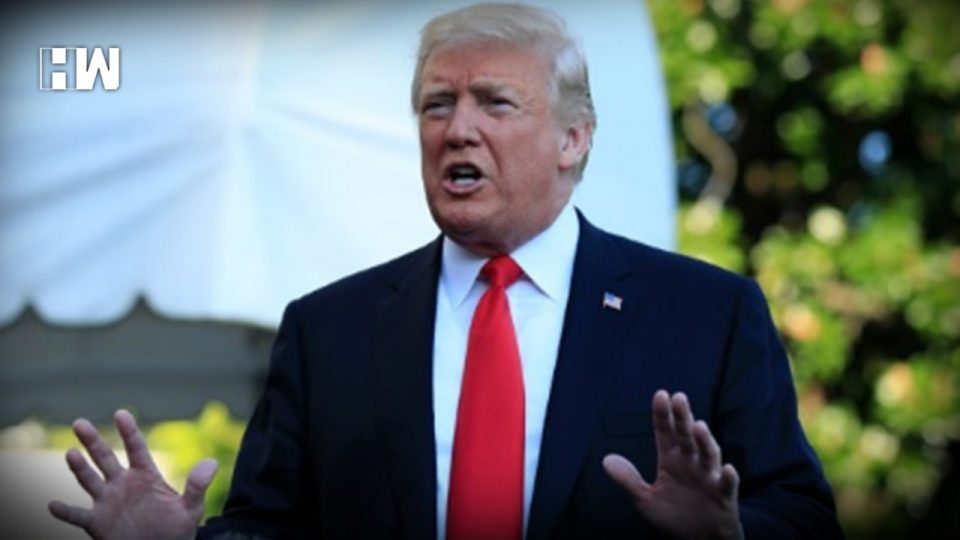Syria | US President Donald Trump on Sunday called on his European allies to take back alleged jihadists captured in Syria, as Islamic State group fighters defended the last scrap of their “caliphate”.
IS declared a proto-state across parts of Syria and neighbouring Iraq in 2014, but has since lost all of it except a tiny patch of less than half a kilometre square near the Iraqi border.
After years of fighting IS, the Kurdish-led Syrian Democratic Forces (SDF) hold hundreds of foreigners accused of fighting for the group, and well as related women and children. Syria’s Kurds have repeatedly called for their countries of origin to take them back, but these nations have been reluctant.
The issue has taken on greater urgency, however, amid fears of a security vacuum since Trump’s shock announcement in December that US troops would withdraw.
“The United States is asking Britain, France, Germany and other European allies to take back over 800 ISIS fighters that we captured in Syria and put them on trial,” Trump said in a tweet, using another acronym for IS.
“The Caliphate is ready to fall. The alternative is not a good one in that we will be forced to release them. The US does not want to watch as these ISIS fighters permeate Europe, which is where they are expected to go.” His tweet prompted a reaction from Paris, Brussels and Berlin.
In Syria, “it is the Kurds who hold them (the French jihadists) and we have every confidence in their ability to keep them detained,” French junior interior minister Laurent Nunez told the BFM news channel. If suspected jihadists return to France, “they will all be tried, and incarcerated,” he said.
Coalition member France this month opened the door to bringing back its citizens. A French source told AFP an estimated 150 French nationals, including 90 children, could be brought back to France, but authorities have not confirmed any planned transfer.
In Belgium, justice minister Koen Geens called for a collective “European solution” to the problem of foreign fighters, urging a solution that carries the least security risks. “We currently have mothers and children in northern Syria, but also some fighters who are known,” he told Belgian public television network VRT.
In Germany, foreign ministry sources said “the federal government is examining options to enable German citizens to leave Syria, especially in humanitarian cases”. Thousands of people have streamed out of the so-called “Baghouz pocket” in recent weeks, but hundreds of civilians are believed to still be inside. At a collection point for new arrivals outside Baghouz on Sunday, dozens of tents and a few trucks sat empty.
Earlier in the week, the area had been thronging with people — women and children, but also suspected jihadists led to one side. “It’s been two days since anyone came out,” an SDF fighter told AFP.
SDF spokesman Mustefa Bali said IS had blocked roads out of its holdout, preventing those remaining from escaping to safety. “Daesh has sealed off all the streets” but up to 2,000 civilians could still be inside, he said, using the Arabic acronym for IS.
A spokesman for the US-led coalition said IS was using these women and children as “human shields”. “Civilians who have escaped are reporting ISIS is using them as human shields and killing innocent civilians in order to intimidate others from trying to leave,” Sean Ryan said.
Trump on Friday promised announcements linked to “the eradication of the caliphate” within 24 hours, but a top SDF commander then warned the battle would take a few more days. Beyond Baghouz, IS still has thousands of fighters and sleeper cells scattered across several countries.
In Syria, it retains a presence in the vast Badia desert, and has claimed deadly attacks in SDF-held territory. “Over the past month, more than one foreign sleeper cell was arrested in multiple areas in Syria,” spokesman Bali said.
Any withdrawal would leave Syria’s Kurds exposed to a long-threatened attack by neighbouring Turkey, which views Kurdish fighters as “terrorists”. They have scrambled to seek a new ally in the Damascus government after spending most of Syria’s civil war working towards self-rule.
Eight years into the conflict that has killed more than 360,000 people, President Bashar al-Assad’s government controls nearly two-thirds of the country. But the SDF hold around a third of the country still beyond its control.
As an independent media platform, we do not take advertisements from governments and corporate houses. It is you, our readers, who have supported us on our journey to do honest and unbiased journalism. Please contribute, so that we can continue to do the same in future.

